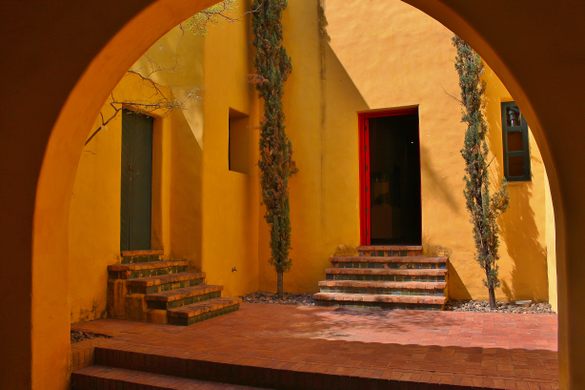"Pritzker-winning architect Luis Barragán’s works might seem like relics of the past to some, but his first masterpiece, which still stands in Guadalajara, is as magnificent as ever.
The house was commissioned in 1928 by Efraín González Luna (who later became one of the founding ideologues of the Partido Acción Nacional, PAN). Around that time, the Tapatía school of architecture was born, seeking to create architecture that represented the state of Jalisco by combining the villa with rural and hacienda architecture. Barragán was a passionate member of the group.
González Luna inhabited the house until his death in 1964. His descendants did not have the resources or the intention to occupy it, and in 1999 it was loaned to ITESO.
Today, the house operates as a cultural center and cafeteria, and visitors are welcome to come and discover Barragán’s architectural handiwork. There are perfectly flat green roofs and windows made with gold dust and Tlaquepaque crystal. The house was also made with materials from Guadalajara such as ceramics, tile, wood, adobe, and lime paint. The main corridor connects all of the rooms and leads to an Arab-inspired fountain. In the tower, there is an office, and the upper floor includes an oratory.
Due to its unusual and elegant architecture, the house was declared a National Monument in 2006, and remains a masterpiece of the Tapatia School." - ATLAS_OBSCURA














